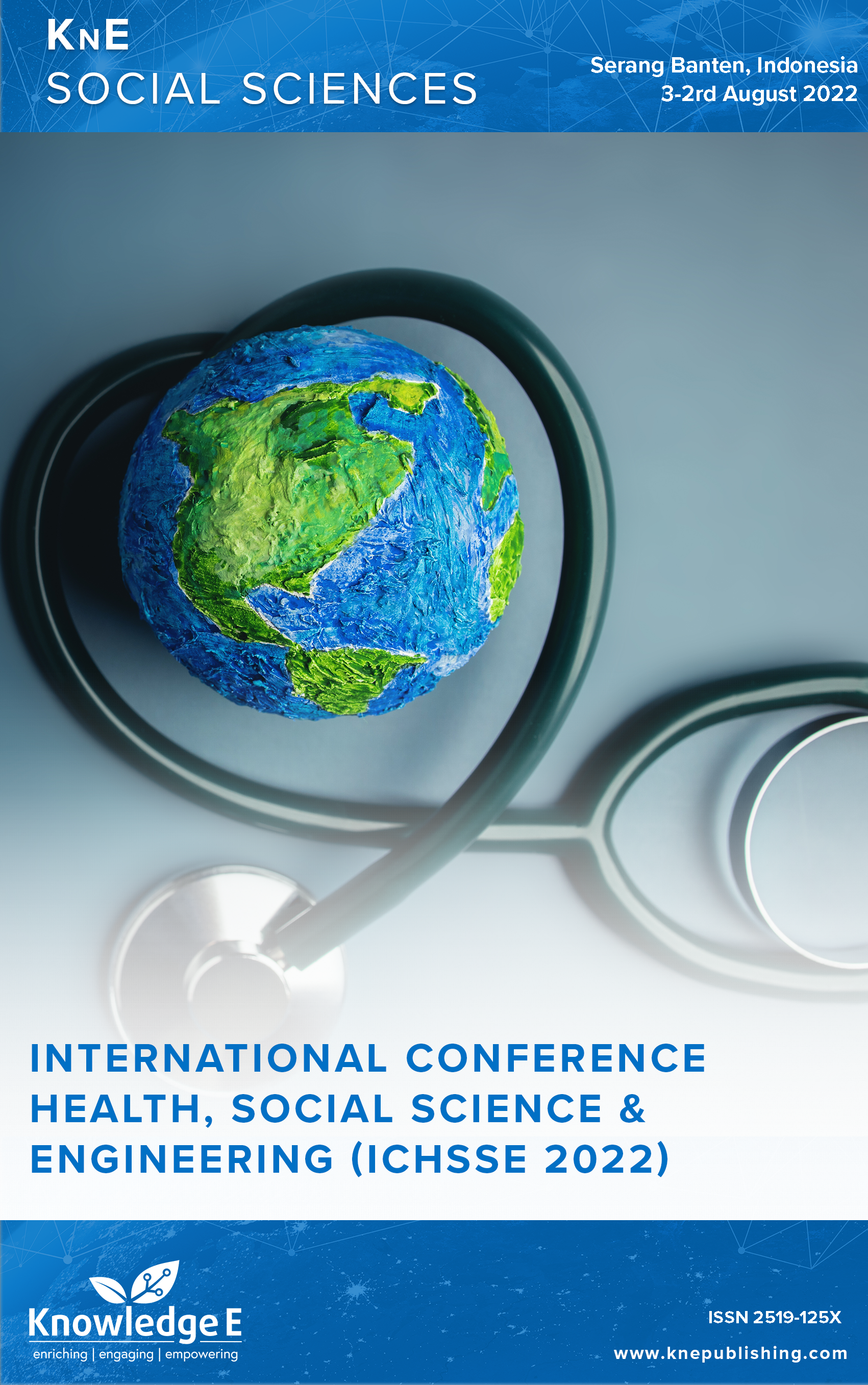The Effect of Giving Lemongrass Aromatherapy Oil and Love Lactation Massage on Breast Milk Production for PostPartum Mothers at Ciomas Health Center
DOI:
https://doi.org/10.18502/kss.v8i14.13839Abstract
The percentage of exclusive breastfeeding for infants 0-6 months in Banten province in 2019 was 64.4% in line with analysis data on stunting measurements in Ciomas subdistrict of 9.23%, which increased compared to 2020 which was 4.60%. Exclusive breastfeeding is an indicator of program coverage related to stunting that needs attention because the coverage of exclusive breastfeeding is only 31.56%. Seeing the milk production of post partum mothers who were given complementary therapies of love lactation massage and lemongrass aromatherapy. With a descriptive research design and a case study approach, the research samples were 2 postpartum mothers who were examined using an instrument using a questionnaire sheet on the adequacy of breast milk production before and after giving love lactation massage and lemongrass essential oil. Postpartum mothers who have low milk production after being given love lactation massage and lemongrass essential oil for 2 weeks with massage every morning experienced an increase in breast milk production based on 6 aspects that have been assessed, namely based on the mother’s condition about the condition of breast milk production and the condition of the baby who has been breastfed. There is an effect of giving love lactation massage and lemongrass essential oil for 4 weeks on the adequacy of breast milk. It is hoped that health workers can recommend love lactating massage and lemongrass essential oil aromatherapy to increase breast milk production in postpartum mothers.
Keywords: love lactation massage and lemongrass essential oil, post partum mothers, breast milk production
References
[2] Ministry of Health. “Guidelines for public health program indicators in the national medium-term development plan and strategic plan.” 2020, pp. 2020–2024.
[3] Provincial Health Office. “Banten Province Health Profile year 2019.” Serang, 2020.
[4] Asih Y, Risneni. Postpartum and breastfeeding midwifery care. 1st ed. Jakarta: Trans Info Media; 2016.
[5] Hadi SPI. “Complementary care for increasing breast milk production.” In Evidence-Based Lactation Management. 2021. https://doi.org/10.46984/978-623- 94453-9-3-1457
[6] Saputri IN, Ginting DY, Zendato IC. The effect of oxytocin massage on breast milk production in postpartum mothers [ JKK]. Jurnal Kebidanan Kestra. 2019 Oct;2(1):68– 73.
[7] Destri U, Sarkiah S, Friscila I. “Effectiveness of lavender aromatherapy giving on breast milk production in normal postpartum mothers : Literatur review.” Proceeding Of Sari Mulia University Midwifery National Seminars. 2022 Feb;3(1). 2022, https://doi.org/10.33859/psmumns.v3i1.813.
[8] dkk Widyawati M. Loving postnatal anad treatment. Sidoarjo: IHCA, 2016.
[9] Su WW, Gao XA, Tian JS. [Effect of electroacupuncture at Shaoze (SI 1) on breast milk volume and composition in postpartum hypogalactia]. Zhongguo Zhenjiu. 2020 Jan;40(1):13–16.
[10] Panyaphu K, On TV, Sirisa-ard P, Srisa-nga P, ChansaKaow S, Nathakarnkitkul S. Medicinal plants of the Mien (Yao) in Northern Thailand and their potential value in the primary healthcare of postpartum women. J Ethnopharmacol. 2011 May;135(2):226–237.
[11] Budiati dkk. “Increase in milk production for sc mothers with successful breastmilk packages.” J Keperawatan Indo. 2010;2.
[12] Suprihatin K, Maemonah S. Prolactin. Primipara Breastfeeding Women At Puskesmas. Sidoarjo District; 2018.
[13] Lu P, Ye ZQ, Qiu J, Wang XY, Zheng JJ. Acupoint-tuina therapy promotes lactation in postpartum women with insufficient milk production who underwent caesarean sections. Medicine (Baltimore). 2019 Aug;98(35):e16456.
[14] Juniawan H. “The effect of levels aromatherapy (Cymbopogon Citratus) on reducing hypertension in pre-elderly aged 45-59 years (the effect of Sereh Aromaterapy (Cymbopogon Citratus) on the decrease of hypertension in elderly previous ages 45-59 years).” 2019.

